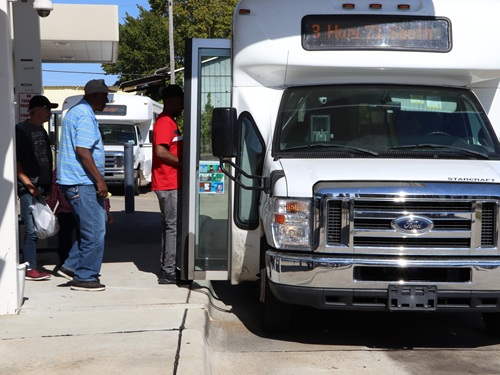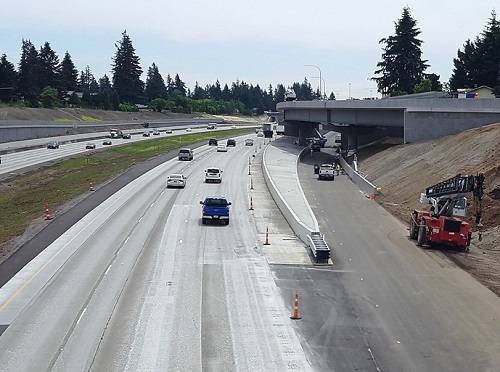Starting May 19, the Washington Department of Transportation said travelers will no longer be able to access automated statewide travel information by calling the 511 phone number, largely as demand for that specific service has decreased dramatically.
[Above photo by WSDOT]
For the past two decades, the agency noted in a blog post that the 511 phone number offered a way to receive traffic impacts, crash alerts, current and future weather forecasts, mountain pass conditions and ferry information – including schedules, fares, and wait times – as well as reversible-express lane status.
However, despite high call volumes in the early years of the program, system usage has declined dramatically every year during the past decade. For example, in 2009, the 511 phone number received over 2.2 million calls – but by 2022, that number fell to less than 302,000 calls; an 86 percent decrease.
WSDOT pointed to a “number of likely reasons” for the decline in 511 calls – most of them due to new technologies, such as social media applications like Twitter and GPS-based mapping programs like Waze.
The agency added that its 511 phone system is also expensive to operate, costing more than $150,000 a year in hard costs and requiring many staff hours to continually update travel information in the increasingly antiquated technology and to maintain signs about the program.
The steady decrease in use, antiquated technology and cost were the deciding factors in the decision to deactivate the 511 phone number. Once discontinued, these resources will be reallocated to more efficient and emerging information technologies to better serve Washington travelers, WSDOT said.
Options touted by the agency as alternatives to the 511 automated phone system include:
- WSDOT online tools, including the mobile app, traffic cameras, and email alerts.
- WSDOT online traveler information for traffic, weather, ferry schedules, and a real-time travel map.
- WSDOT social media accounts on Twitter and Facebook.
- Radio stations 530 AM and 1610 AM for highway advisory radio alerts.
Interestingly, overall 511 system usage – especially in terms of visits to 511-dedicated website – is increasing in many parts of the country for a variety of reasons.
For example, in 2022, the Wyoming Department of Transportation said its 511 travel website – www.wyoroad.info – registered about 2.2 billion site visits for the year; the most “hits” in a calendar year since the department started tracking them several years ago.
Meanwhile, the Kansas Department of Transportation said it witnessed a major spike in its new KanDrive mobile phone application and the Kansas 511 phone system by motorists over the last two months of 2022.
Those usage spikes follow updates the agency made to both of them in October 2022, which included making the KanDrive app available to download as an App on Android and iPhone Operating System or iOS cell phones.
Meanwhile, the Idaho Transportation Department launched a new Idaho 511 App alongside an update to its 511 website, as well as a new version of the 511 mobile application to their mobile devices. However, the agency said the web address, 511.idaho.gov, and phone number, “dial 511,” stayed the same.
In June 2022, the Wisconsin Department of Transportation added live traffic video feeds to the state’s 511 travel information system, while in December 2021 the Pennsylvania Department of Transportation updated its 511PA travel information service to include the locations of electric vehicle chargers and all low bridges over state roads.
And in February 2021, the Arizona Department of Transportation added a new truck-navigation feature to its Traveler Information 511 website to help commercial vehicle operators more easily plan routes through the state.
 States
States
Nick Donohue Appointed Virginia’s Secretary of Transportation
December 12, 2025 States
States

